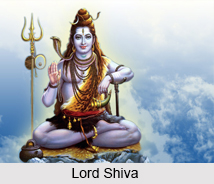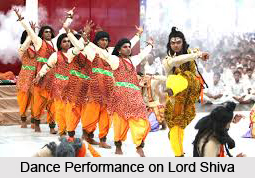 Influence of Shaivism on folk music in East India can be observed in various songs. Shaivism also called "Saivism" is one of the four most widely followed sects of Hinduism. It reveres the god Shiva as the Supreme Being. Shaiva is a religious faith that was widely propagated among the people as a result of Brahmanical bias of the Sena kings of Bengal, though this thought was deeply rooted in the principal religious system from days of yore.
Influence of Shaivism on folk music in East India can be observed in various songs. Shaivism also called "Saivism" is one of the four most widely followed sects of Hinduism. It reveres the god Shiva as the Supreme Being. Shaiva is a religious faith that was widely propagated among the people as a result of Brahmanical bias of the Sena kings of Bengal, though this thought was deeply rooted in the principal religious system from days of yore.
Various streams of Brahmanical thoughts were responsible for the common interpretation of the image of Lord Shiva. Another feature developed around the mythical marriage of Lord Shiva and Parvati, a humanized matrimonial ceremony of gods taking place, as it were, in the hearth and home of a common villager. From this welled up the emotional outburst of rural people centring round the parting of daughter from the house of her parents after marriage (Vijaya Dashami) and reunion after daughter"s return from her husband"s house (Agamani vijaya). Touching music was spontaneously set to sporadic compositions based on this touching events. Some very popular compositions of the same genre have spread in the rural people during the nineteenth century.
 Historically, the image of Shiva was very popular from the early period of the Hindu cult. During the predominance of Buddhist faith, Hindu Brahmins also participated in Hinayana Buddhist processions. As a result of their participation, the images of Hindu gods like Shiva, Lord Indra, Lord Brahma, etc., were brought to the forefront of the procession along with the principal image of Buddha. The rulers followed this practice in their act of popularizing Buddhist cult. Then, again, Shiva also had to face depredation due to the pressure from other local cults. When Lord Krishna plays the main role in the race of religious faiths, Shiva falls back, though saiva faith predominates among certain sections of people. In Gopichandergan, a narrative representing Natha cult, mention has been made of Lord Shiva"s escape from an attack by another deity (kacu-bari diya siv palaiya jay).
Historically, the image of Shiva was very popular from the early period of the Hindu cult. During the predominance of Buddhist faith, Hindu Brahmins also participated in Hinayana Buddhist processions. As a result of their participation, the images of Hindu gods like Shiva, Lord Indra, Lord Brahma, etc., were brought to the forefront of the procession along with the principal image of Buddha. The rulers followed this practice in their act of popularizing Buddhist cult. Then, again, Shiva also had to face depredation due to the pressure from other local cults. When Lord Krishna plays the main role in the race of religious faiths, Shiva falls back, though saiva faith predominates among certain sections of people. In Gopichandergan, a narrative representing Natha cult, mention has been made of Lord Shiva"s escape from an attack by another deity (kacu-bari diya siv palaiya jay).
Saiva faith is connected with Sakta religious thought, the two being separate phases of one fundamental religious genre. Though methods differ largely, some Shiva worshippers find their religious faith deployed in a different way in the worship of Sakti, the divine symbol of the mother, a separate manifestation of the same Being. In Bengal, the two phases had unique spontaneous expression in public since the Buddhist days. Believers in Jsakti, mostly rural folks, were connected with the narrative cults of the people starting from the Sena period, while Saivas gave expression to their thoughts in Gambhira and Gajan. Rajataranginl of Kalhana of Jammu and Kashmir refers to the existence of diva temples and performance of Gambhira in the seventh century. Old tradition of Gambhira survives in the Maldah district.




